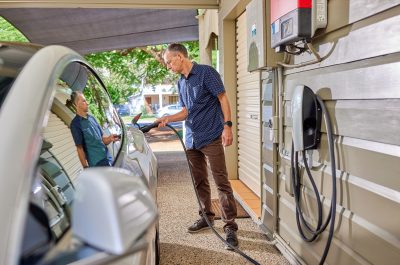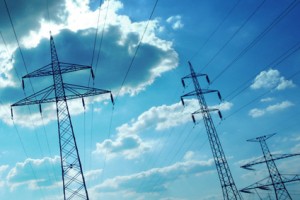I’m from the Australian Government, and I’m here to help
In one of the many courtyards around Parliament House stands a red maple that year after year has exploded into a resplendent brilliance of red right around Budget time. That’s because the Treasurer usually rises to the dispatch box to hand down his forecast for spending in May. This year, with a new government, a new treasurer and plenty of rain, press conferences in the lead up to Parliament House night of nights (except for perhaps the midwinter ball) were held in front of blossoms of magnolia and roses and, unusually in October.
It’s been a difficult year for Australia. The hangovers from Covid are still at the forefront of our minds. The Russian invasion of Ukraine still rages which has seen gas and electricity prices soar. Interest rate rises have meant the glory of days of spending are over and households are having to tighten their belts before Christmas. La Nina will be gracing us with her presence for the third year in a row and a good portion of the east coast has seen months’ worth of rain within a few days resulting in flash flooding. It’s been a big year.
Despite the October budget and the feeling that we only just had an election, there’s been no political fatigue from journalists, commentators or less surprisingly the pollies themselves. All the above factors would have been carefully weighed by the Prime Minister and Treasurer as they handed down the first budget of the 47th Parliament.
So, what is in store for the energy sector?
Rewiring the Nation
The Rewiring the Nation fund is not new. Labor announced it from opposition in 2020. It resonated with the industry and it was encouraging to see the acknowledgment that there was no transition to a net zero future without a concerted investment in transmission infrastructure.
This is the first time it has appeared in the budget however, and now we have some facts and figures.
Rewiring the Nation will be managed by a new Rewiring the Nation Office (RTNO) and it will sit within the Department of Climate Change, Energy, the Environment and Water. The Australian Energy Market Operator (AEMO) will act as the technical adviser and the financing will come from the Clean Energy Finance Corporation. There’s a sizeable amount of cash allocated for the start up and operating costs for the RTNO.
The bulk of the funding will be made up of $20 billion to provide concessional loans and equity to encourage investment in transmission infrastructure projects.
There will be another $9.4 million to deliver reforms to transmission regulation, including the regulatory investment test for transmission (the RIT-T) that will work to overcome barriers to the delivery of transmission projects.
In a pre-budget announcement, the government put some meat on the bones of the Rewiring the Nation plan which included announcing a partnership between Victoria and the Commonwealth which would see concessional financing for Renewable Energy Zone projects including offshore wind projects and a concessional loan of $750 million for transmission project VNI West.
A second agreement was struck between the Commonwealth, Victoria and Tasmania which would see access to a concessional loan from Rewiring the Nation, through the Clean Energy Finance Corporation, for 80 per cent of the project costs of Marinus Link, with the additional 20 per cent to be an equity investment shared equally between the Commonwealth, Victoria and Tasmania.
Driving the Nation Fund
The Government will provide $275.4 million over six years from 2022–23 as part of its election commitment to double the Commonwealth’s investment to $500 million and establish the Driving the Nation Fund to invest in cheaper and cleaner transport. This includes $39.8 million over 5 years from 2022–23 to establish a National Electric Vehicle Charging Network to deliver 117 fast charging stations on highways across Australia.
Labor has also removed the fringe benefit tax and import tariffs from eligible battery, hydrogen fuel cell and plug in hybrid electric cars to make EVs more accessible to everyday families.
While investing in infrastructure is important for the long term, there are no short-term solutions here.
While costs are coming down, the 100k price tag on a Tesla is well out of reach for most households. There are only about four EVs on the market with a <$50k price tag. This will change as the market matures and more cars in the market mean the price will go down. However even if you can afford an EV, ongoing supply chain issues mean you may struggle to get your hands on one, with your new car sitting on back order for months.
Hydrogen Hubs
Hydrogen has enormous potential to replace natural gas for home heating, hot water and cooking. It can also replace petrol and diesel in vehicles and provide essential support to the electricity system as an on-demand energy source to help manage peak usage periods and cope with droughts in renewable electricity generation.
The 2022-2023 Budget sees investment in new energy industries such as hydrogen.
Hydrogen hubs are regions where various producers, users and potential exporters of hydrogen across industrial, transport, export and energy markets are co-located. They will give Australia’s green hydrogen industry an early-stage springboard to scale, which will help support other industrial sectors in the regions.
The Townsville Hydrogen Hub initiative and the $454 million Regional Hydrogen Hubs program will deliver on the Government’s plans to establish hydrogen hubs in places including Gladstone, the Hunter, Bell Bay, and the Pilbara. These investments will help develop Australia’s green hydrogen industry and boost its decarbonisation efforts.
Each hub is expected to bring on at least $41 million to $70 million of additional funding, totalling at least $501 million of further investment. They are also expected to create jobs for technicians, tradespeople, engineers and other professionals in the green hydrogen industry and significant job opportunities in related businesses and service industries.
Community Batteries leading the charge
The Government will provide $224.3 million over four years from 2022–23 to deploy 400 community batteries across Australia to “lower bills, cut emissions and reduce pressure on the electricity grid” by allowing households to store and use excess power they produce. Community batteries are connected directly to the low voltage electricity distribution network and provide benefits to a local community where the battery is located.
The neighbourhood batteries have the dual advantage of providing support to the electricity network by soaking up excess solar production and providing clean, cheap energy to the community in which it is produced when demand is high. Another key benefit of neighbourhood batteries is they offer all people within a community the opportunity to participate in the clean energy future whether they have solar panels on their roof or not.
There has already been some state-based funding given to networks to begin to install community batteries in their foot print.
$22.8 million to “simplify’’ regulation for the Australian Energy Regulator
The government says this funding, to be provided over four years, will enable the AER to “simplify regulation for the safe, reliable and efficient use of gas pipelines and investment in gas infrastructure, and to allow the AER to undertake additional responsibilities under the Energy Ministers Post-2025 energy market reforms.”
It remains to be seen how this additional funding will help deliver simpler regulation in practice.
No time like the present
There is no time like the present to begin investing in the transition.
As inflation continues to soar, building materials remain scarce and expensive and labour is hard to come by, cost pressures increase. It is critical we can deliver timely new transmission to enable more renewable generation to connect to the grid to help keep energy prices down. Network investment is essential to enable the most affordable transition to a net zero energy system.
The 2022 Federal Budget provides a solid footing to help deliver this.

